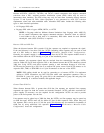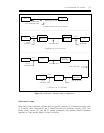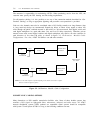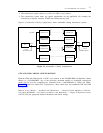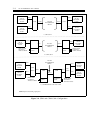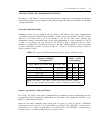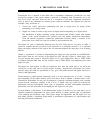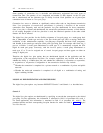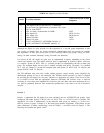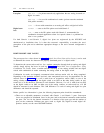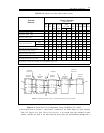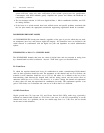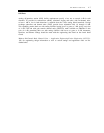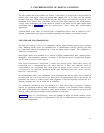
4-2
THE DIGITAL LOSS PLAN
Some quantity of connection loss is desirable and deliberately engineered into most types of
transmission links. The quantity of loss (magnitude and number of dBs) depends on the loss plan
that is administered and the particular type of facility involved. Each particular set of port-to-port
connection losses is known as a loss pad group.
Connection loss serves to eliminate or significantly reduce talker echo on long-distance transmission
links. User perception of transmission performance is primarily a function of the network
connections most frequently used and the particular loss plan administered for those connections.
Once a loss plan is selected and administered, the transmission performance becomes a fixed function
of call routing. Regardless of the loss plan that is used, the functional operation of the other switch
features will not be affected.
The digital loss plan provides for the flexible assignment of loss-pad groups on a trunk-group basis
that is independent of trunk type and also of the port circuit pack type (DS1 or analog). Before the
availability of this administration capability, loss-pad-group assignment had been fixed, transparent,
and dictated by the trunk type and port circuit pack type being used. For example with fixed loss, a
port on a Generic 2 circuit pack administered as trunk type 47 is automatically assigned the ETA
digital tie trunk pad group. Conversely, with the low-loss option, a trunk group administered as
trunk type 47 or 70 can be assigned one of several loss-pad groups and thus appear on either an
analog or digital port.
Therefore, the digital loss plan options that are administered depend on the application and the
configuration of the transmission facilities. For example, application may include such items as
whether the facility is a DMI-to-host link, and whether the connection is on-premises to on-premises,
or on-premises to off-premises. Configuration of the transmission facilities may include:
●
●
Whether the connection is completed via a private network or a combination of private and public
networks
Whether the end-to-end connection is completed via all digital or a combination of analog and
digital switching facilities
LOSS-PLAN IMPLEMENTATION AND PROVISIONING
The digital loss plan options vary between DEFINITY
®
Generic 2 and Generic 1 as described next.
Generic 2
The digital loss plan options are administered by specifying an encode that corresponds to the desired
pad group. For line applications, this information is translated in field 8 of procedure 000, word 1.
For trunk applications, this information is translated in field 13 of procedure 101, word 1. The
permitted encodes and their corresponding loss-plan function for trunks are listed in table 4-1, Digital
Loss Plan Encodes.



